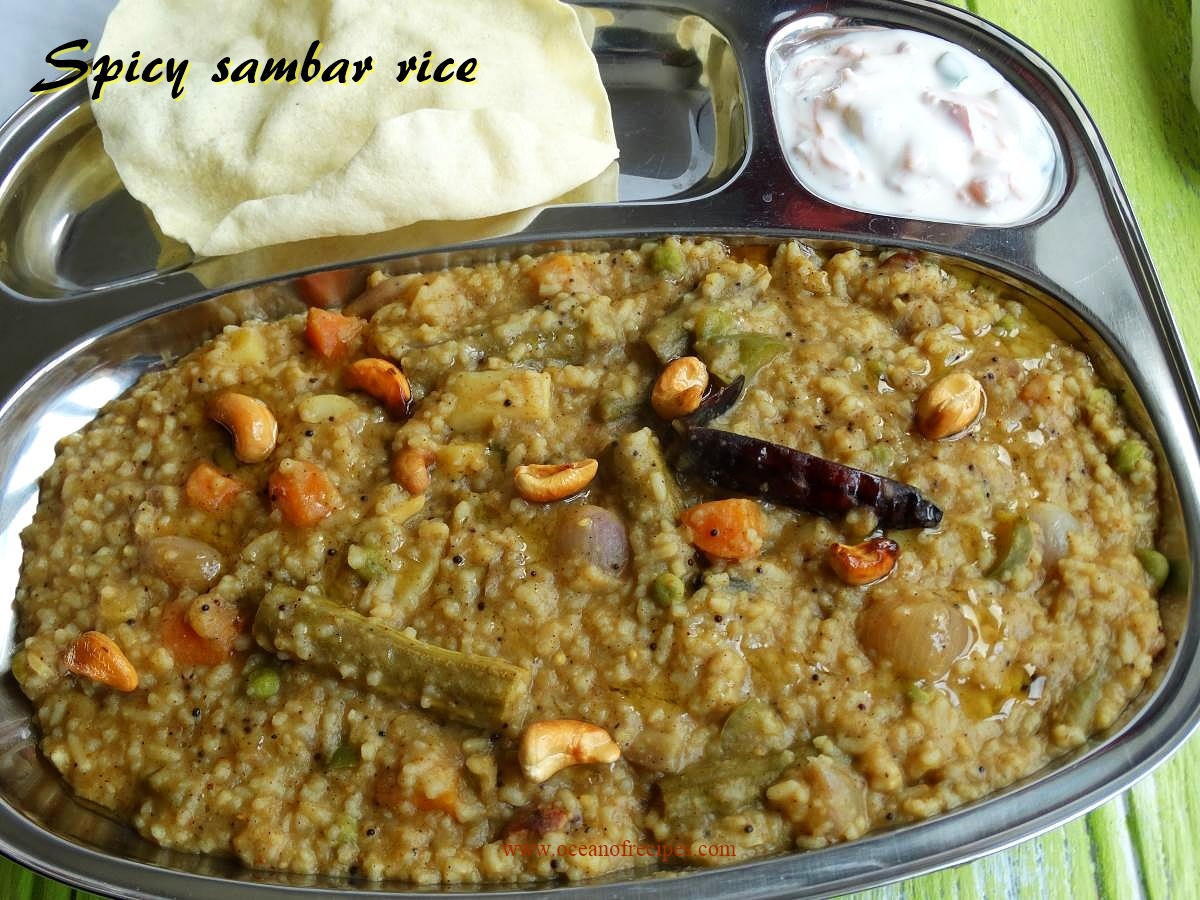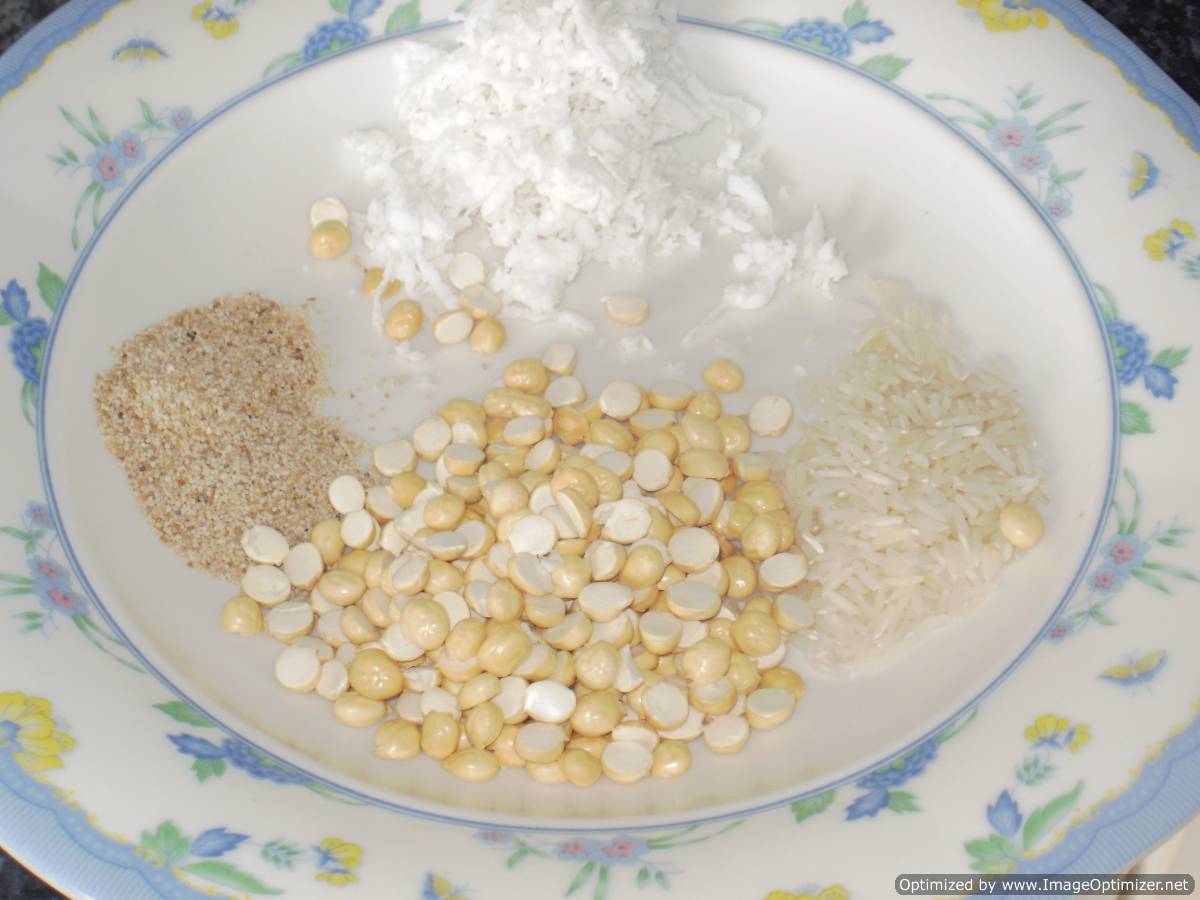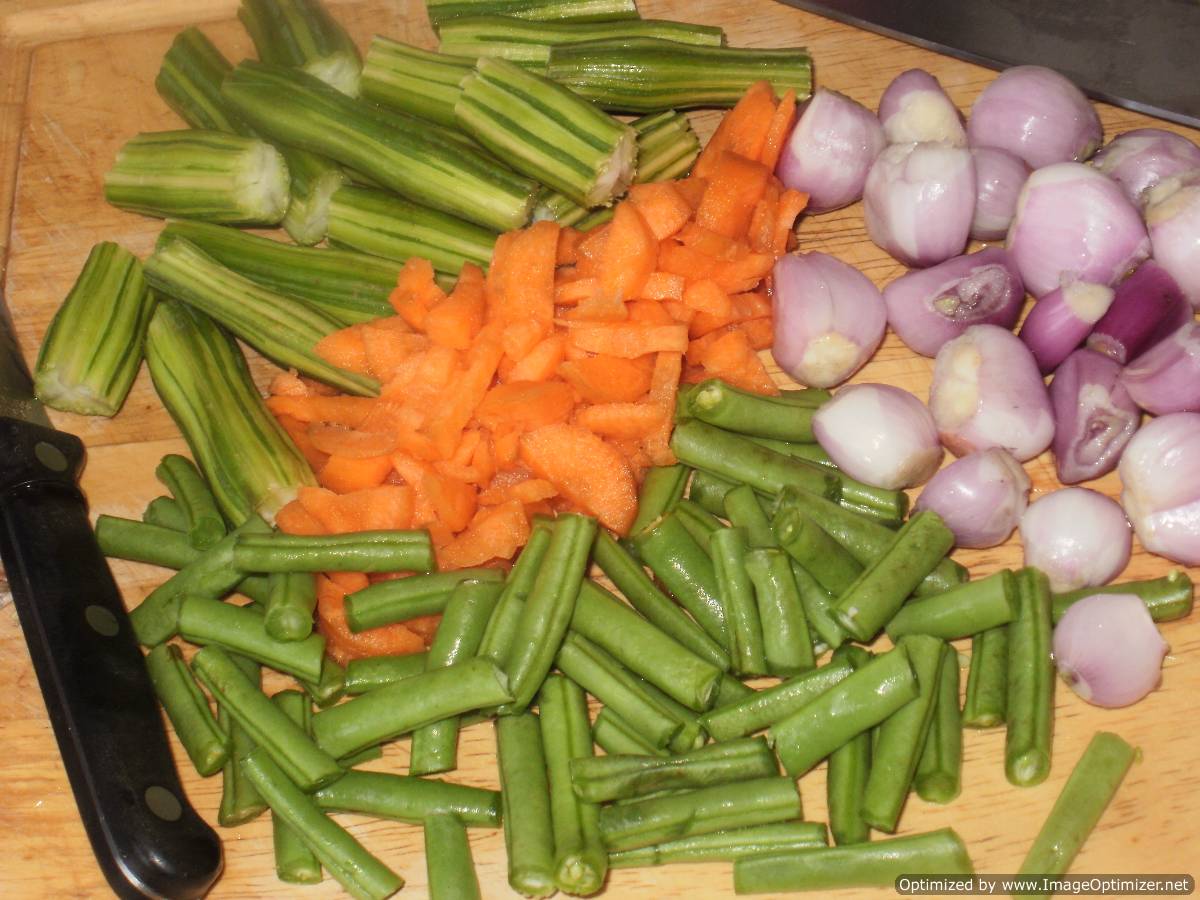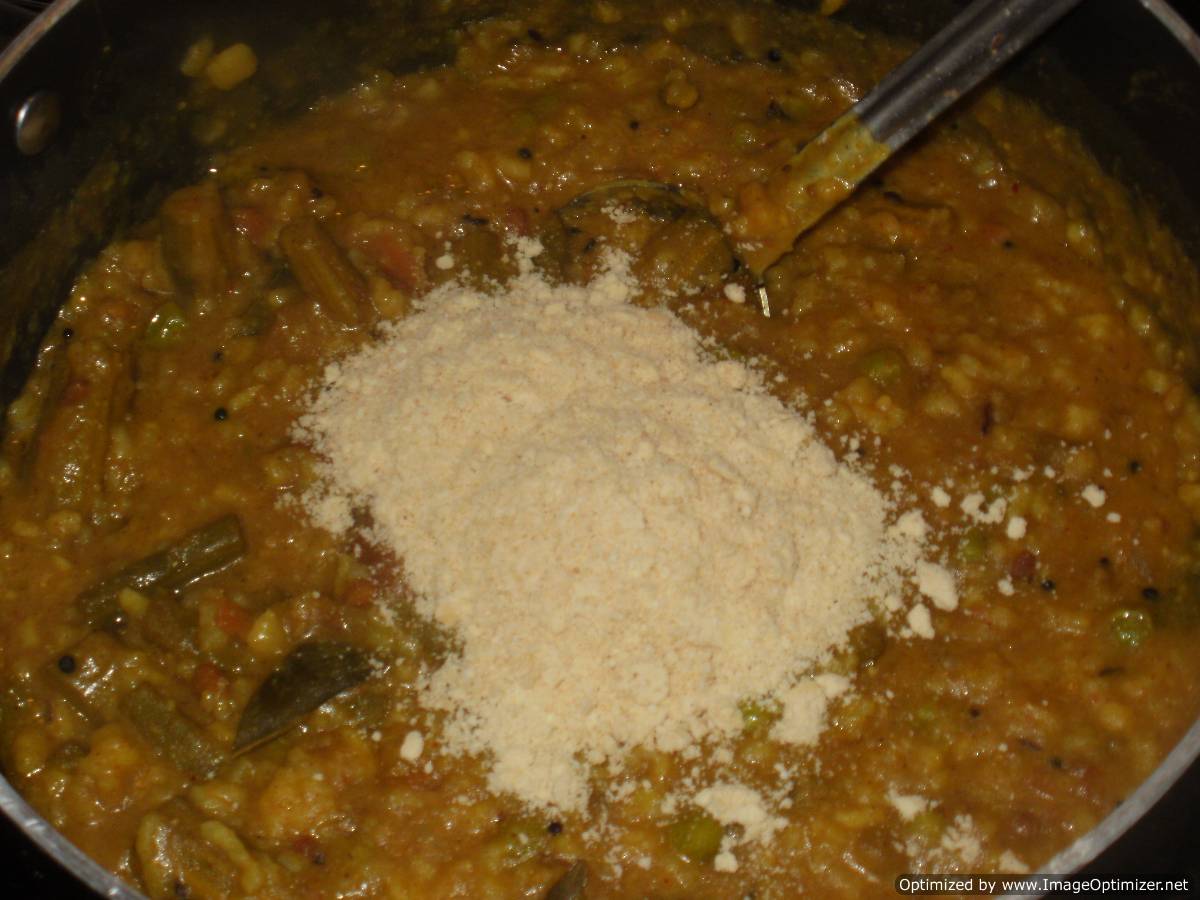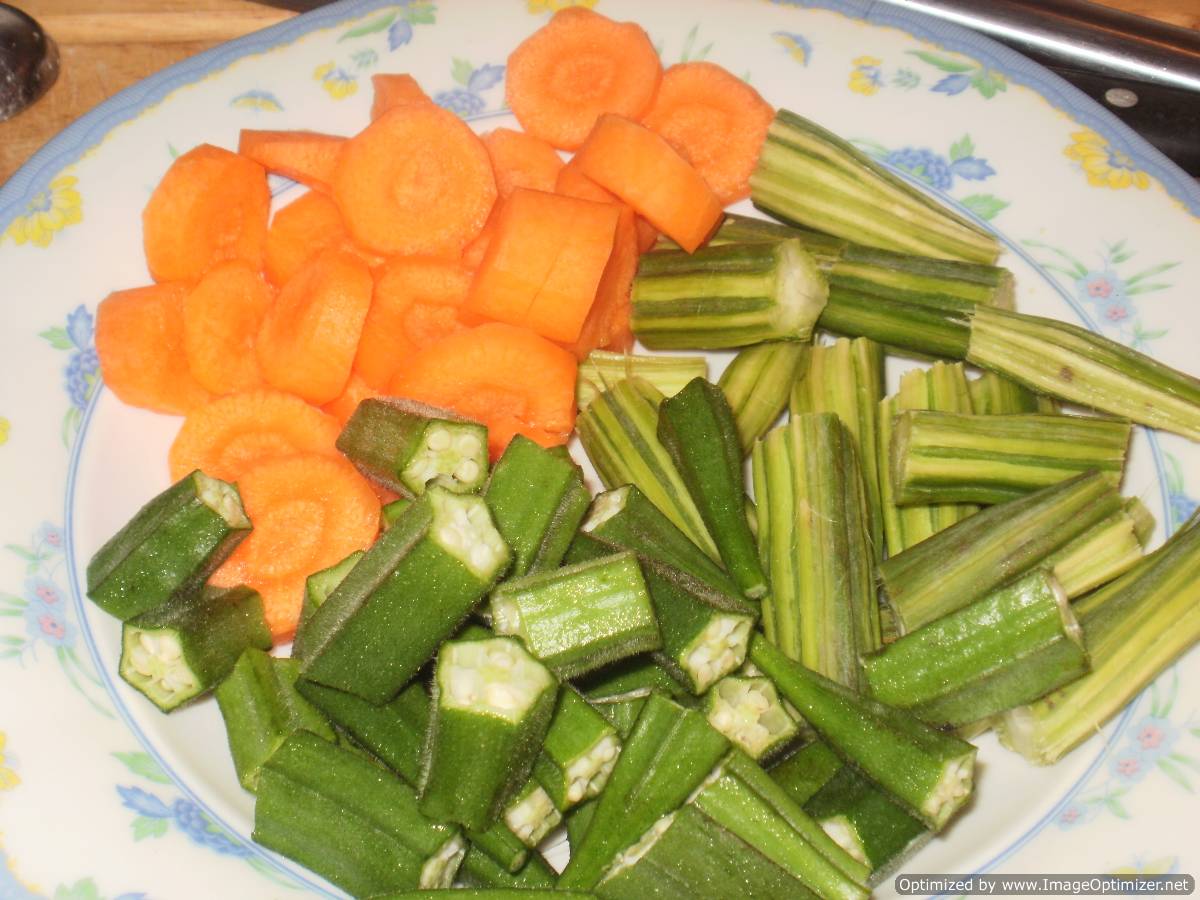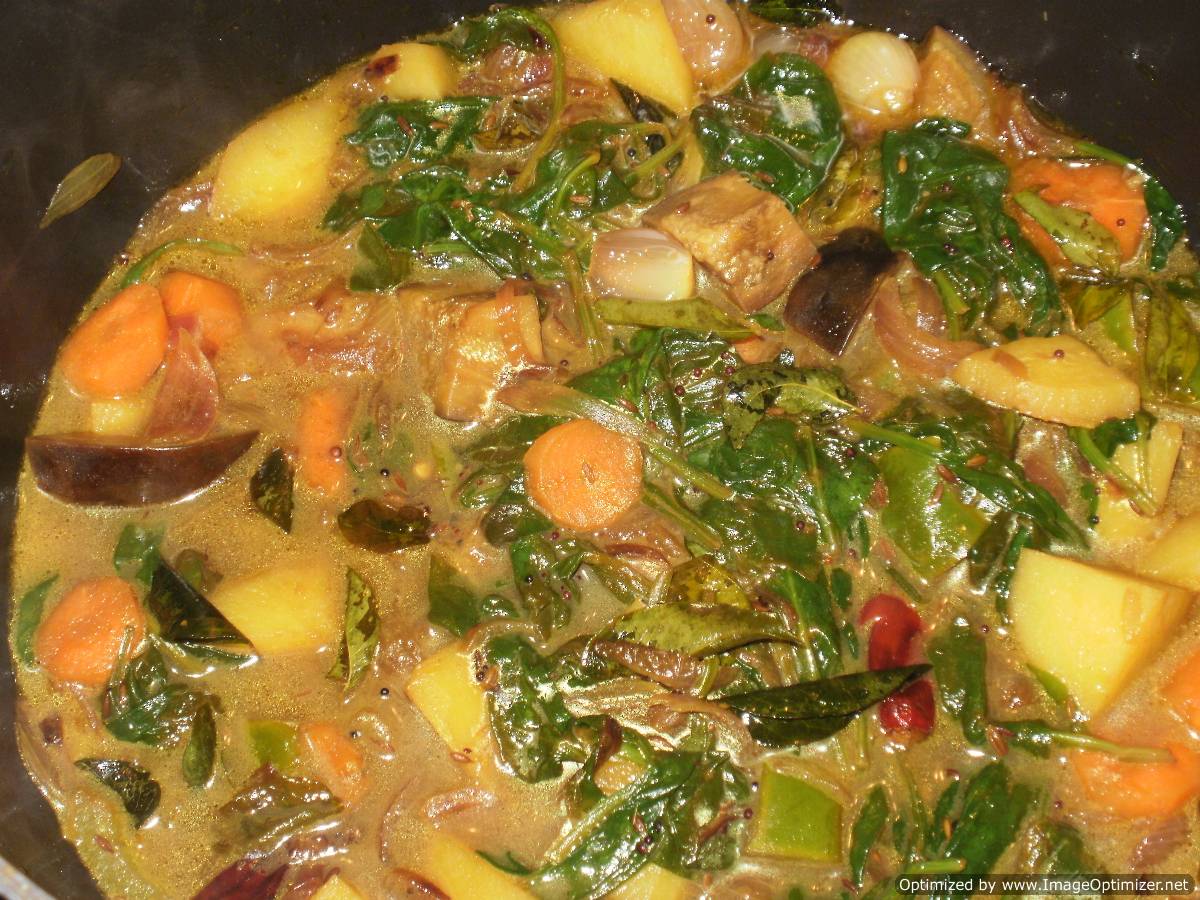Sambar rice / Sambar sadam is a very popular one pot rice dish in Tamil Nadu. This vegetarian delicacy is cooked with rice, dal and vegetables all mixed together to make a unique combination with a special roasted sambar masala/powder. Sambar rice is a famous lunch dish around India. It is served during lunchtime and is prepared for lunch boxes to work or travel as no side dish required. Sambar rice, prepared mildly, is a popular packed lunch for kids as it is packed with nutrients.
The recipe is very similar to Bisi bele bath (Rice dish) from Karnataka. This recipe may not be authentic as I have prepared two freshly roasted dry masala powders to give more flavour and maximum taste. The vegetables that you can add are carrots, beans, orange pumpkin, drumsticks, raw banana, peas, potatoes, brinjals and capsicum (any colour). Try to avoid vegetables like okra because of its slimy texture.
I usually serve sambar rice with papad and onion raitha. You can serve with crisps or with a side of fried potato.
Preparation time: 15 mins (excluding soaking time)
Cooking time: 45 mins
Cuisine: South Indian
Spiciness: Medium
Serves: 4
Tamarind paste
Rice
Lentils or dal
Vegetables
Dry masala (1)
Dry masala (2)
Tadka or tempering
Final tadka
Additional ingredients
There are 5 steps to make this special sambar rice.
a. Cooking the rice and lentil separately (or together)
b. Roasting and making two separate masala powders
c. Preparing sambar
d. Combining with rice and lentil
e. Tempering with ghee
Cooking the rice and lentil
Roasting and making masala powders
Making sambar
Combining the rice, lentil and vegetables
Now final ghee tempering/tadka

